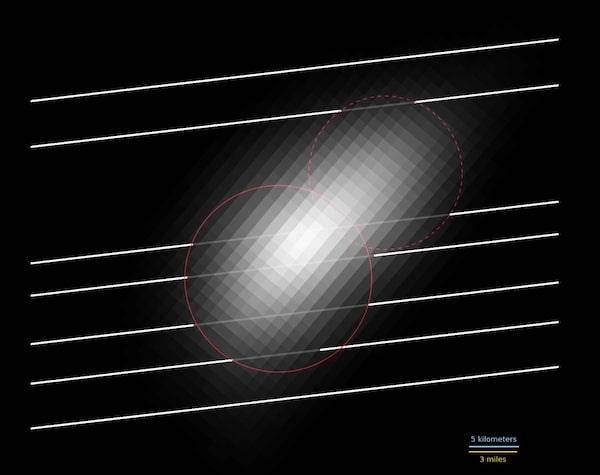
An image of Ultima Thule by NASA's New Horizon spacecraft.
Just hours before a historic rendezvous with Ultima Thule, the most distant object ever visited by a spacecraft, scientists with NASA’s New Horizons mission are getting a first tantalizing glimpse of their target.
Until Sunday, the remote body located more than a billion and a half kilometres beyond Pluto, appeared as no more than a single pixel in the spacecraft’s camera. But by Monday, with the New Horizons probe getting ever closer at the rate of 14.4 kilometres a second, Ultima Thule finally began revealing its shape.
“We know it’s not round – that’s one thing we can say with confidence,” said John Spencer, a member of the mission’s science team, during a Monday afternoon news briefing at the Applied Physics Laboratory in Laurel, Md., which is headquarters for New Horizons.
Dr. Spencer, who is with the Southwest Research Institute in Boulder, Colo., confirmed that the latest image reveals that Ultima Thule is an elongated body, about 30 kilometres long, although it’s not yet clear if it is a single object or two or more in contact.
The image was taken on Sunday, when the spacecraft was still 1.5 million kilometres from its 12:33 a.m. ET rendezvous on Jan. 1. Owing to the probe’s great distance from Earth and the relative weakness of its signal, it took several hours for scientists to receive and process the image.
The view is consistent with information astronomers gleaned about the object over the past two years as they observed it pass in front of and eclipse distant stars. A version of the image with superimposed lines shows where stars blinked out as they passed behind Ultima Thule, and two red circles indicate how Ultima Thule would be oriented if it is really a pair of objects.
Scientist have puzzled over why Ultima Thule does not appear to change in brightness, which would be expected of an elongated object that alternately shows its short and long sides as it rotates.
JJ Kavelaars, a science team member and astronomer with the National Research Council in Canada, said New Horizons has now verified that the object is spinning, but it’s not yet clear at what speed.
New Horizons, which flew by Pluto in 2015, is now on a mission to reveal the Kuiper Belt, a region that extends well beyond the outermost planets of our solar system and is populated by tens of thousands of dark, frozen bodies more than 100 metres across, believed to be relics from the solar system’s formation.